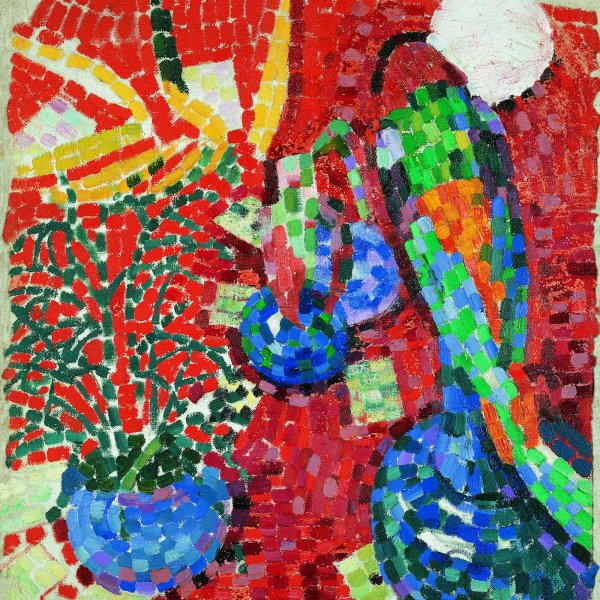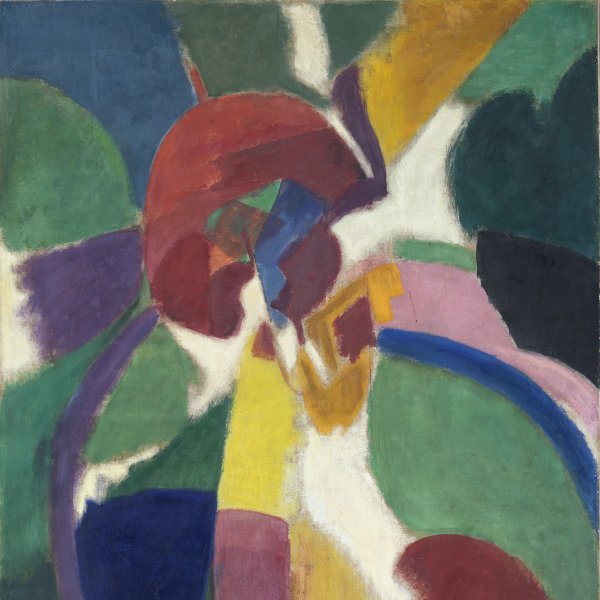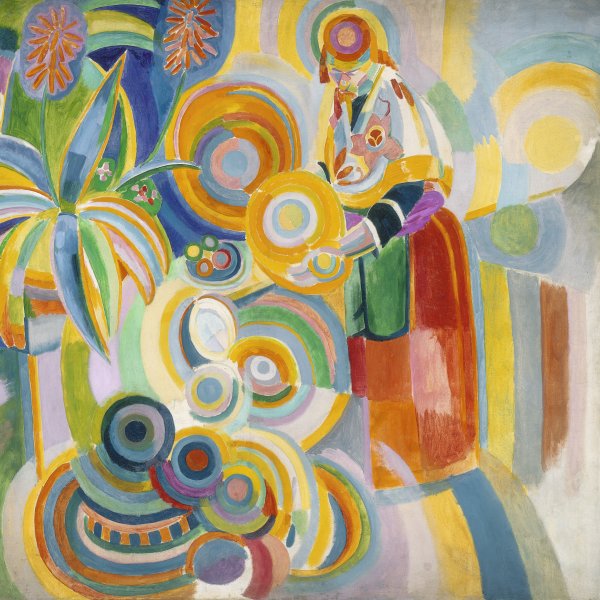Robert Delaunay
Paris, 1885-Montpellier, 1941
The French painter and theoretician Robert Delaunay is one of the key figures in the emergence of abstract art in the early twentieth century. After training as a stage designer, towards 1905 he developed an interest in the Post-Impressionists, Gauguin and Seurat and in Michel-Eugène Chevreul’s studies on colour. He was involved in the beginnings of Cubism, although his interest in colour contrasts and the dissolution of form through light struck a different note which Guillaume Apollinaire later classified as Orphism in 1912. The Church of Saint-Séverin, Eiffel Tower and Simultaneous Windows series marked this change, which eventually led him to abstraction.
In 1910 Delaunay married Sonia Terk, a painter of Ukrainian origin with whom he shared his artistic concerns and a host of projects thenceforward. He was invited by Wassily Kandinsky to take part in the first exhibition of Der Blaue Reiter (The Blue Rider) in Munich, and his treatise on light, which was translated into German, greatly influenced painters such as Paul Klee, Franz Marc, August Macke and Johannes Itten.
When the First World War broke out the Delaunays were in the Iberian Peninsula, where they remained, first in Portugal and subsequently in Spain, until it was over. During this period Robert returned to figurative painting. When they moved back to Paris, Delaunay met André Breton and Tristan Tzara, who introduced him to the new French Dadaist and Surrealist circles.
Around 1930 he veered towards abstraction again and began to take part in the exhibitions and events organised by groups such as Cercle et Carré and Abstraction-Création. At the end of his life he and his wife produced some large coloured reliefs for the Paris Exposition Universelle of 1937 and in 1938 executed a set of paintings to decorate the hall of sculptures in the Salon des Tuileries.
In 1910 Delaunay married Sonia Terk, a painter of Ukrainian origin with whom he shared his artistic concerns and a host of projects thenceforward. He was invited by Wassily Kandinsky to take part in the first exhibition of Der Blaue Reiter (The Blue Rider) in Munich, and his treatise on light, which was translated into German, greatly influenced painters such as Paul Klee, Franz Marc, August Macke and Johannes Itten.
When the First World War broke out the Delaunays were in the Iberian Peninsula, where they remained, first in Portugal and subsequently in Spain, until it was over. During this period Robert returned to figurative painting. When they moved back to Paris, Delaunay met André Breton and Tristan Tzara, who introduced him to the new French Dadaist and Surrealist circles.
Around 1930 he veered towards abstraction again and began to take part in the exhibitions and events organised by groups such as Cercle et Carré and Abstraction-Création. At the end of his life he and his wife produced some large coloured reliefs for the Paris Exposition Universelle of 1937 and in 1938 executed a set of paintings to decorate the hall of sculptures in the Salon des Tuileries.







